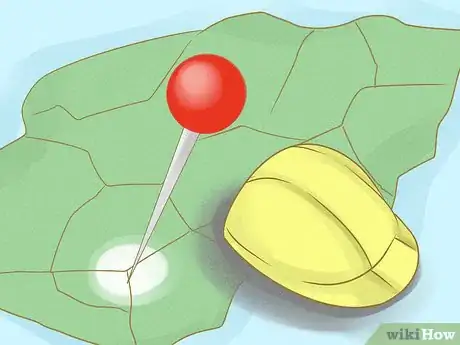This article was co-authored by Clinton M. Sandvick, JD, PhD. Clinton M. Sandvick worked as a civil litigator in California for over 7 years. He received his JD from the University of Wisconsin-Madison in 1998 and his PhD in American History from the University of Oregon in 2013.
There are 8 references cited in this article, which can be found at the bottom of the page.
wikiHow marks an article as reader-approved once it receives enough positive feedback. In this case, 95% of readers who voted found the article helpful, earning it our reader-approved status.
This article has been viewed 132,315 times.
A homeowners association (HOA) is a legal entity that sets the rules and regulations for homeowners in certain neighborhoods and protects their property rights. Depending on the HOA, property owners can voluntarily join the association or some home owners may be required to join if they purchased property that is already associated with a mandatory HOA.
Steps
Generating Interest in a Homeowners Association
-
1Gather a core group of people to start the HOA. When choosing a group to form the association, it may be best to start with a smaller number of people who will be responsible for actually setting up the legal entity and talking with neighbors about the benefits of forming and joining an HOA. However, before setting up the actual HOA, it is important that you generate support from most, if not all, of the neighbors.
- You should choose a convenient time and place to hold the initial HOA meetings so that all of the core group members can attend. You can consider having each of the members host a meeting at their home, condo, or duplex.
- During the initial meeting, discuss why you are interested in starting an HOA.
- Before your second meeting, members should research local and state laws to ensure that HOAs are permitted in your community.
- You should also discuss the best ways to convince others to join the HOA. For example, you can circulate a survey asking everyone what changes and/or services that they would like to see in their community or complex.
- You can use the survey responses as a guide to developing a plan for the HOA.
-
2Hold information sessions. Once the core members have established a basic outline of what the HOA would provide, you should host information sessions for all of the neighbors. This allows people to ask questions of the core members and voice their concerns about the HOA. It also allows people to discuss how they want to interact with the HOA and provide suggestions and input on desired services.Advertisement
-
3Promote the benefits of the HOA. You should use the information meetings to try and “sell” the idea of an HOA to your neighbors. Explain how membership dues will be used to provide specific benefits to the community, such as landscaping to beautify the neighborhood and increase property values. If you live in a duplex or condo, an HOA might help pay collective bills and save for building repairs. You should also discuss how the HOA can pool community resources to provide benefits that families could not afford on their own, such as a new playground.
-
4Offer different fee arrangements to allow for more involvement. Consider preparing different tiers of HOA dues. For example, if everyone in the neighborhood or complex wants to build a pool for community use, plan out how much money that would take and the cost to each member. You should also provide lower cost options and specifically detail what services the HOA would provide.
-
5Consider making the HOA voluntary. When starting a new HOA, you will most likely need to make the organization voluntary, at least in the beginning. By making the organization voluntary, families will not feel “trapped” by the organization and may be more likely to join. As the HOA demonstrates its benefits to the community or complex, more homeowners, condo owners, and duplex owners may be willing to join and participate.
- A mandatory association requires all homeowners, condo owners, and duplex owners in a certain community to join the HOA. HOA membership would actually be linked to the sale of one’s home, condo, or duplex.[1]
Determining Rules and Regulations for the Association
-
1Decide what services to provide to members. After you have a majority of property owners in your neighborhood willing to participate in an HOA, you should determine what services the HOA will provide to its members. You may have already compiled a list of desired services during your informational sessions. When deciding which services you want to offer you can consider the following:
- High speed internet.
- Satellite TV.
- Garbage pick up.
- Snow removal.
- Landscaping.[2]
-
2Consider what restrictions to include. As a way to maintain property values and create a consistent and pleasing appearance of the area, HOAs often place restrictions on what can be done on the outside of owners’ properties. For example, an HOA may restrict owners from painting their house certain colors, such as hot pink. Some potential restrictions could include the following:
- Requirements to mow the lawn every week in the fall and spring and every other week in the summer.
- Limits on what color owners can paint the exterior of their home.
- Requirements as to where visitors can park.
- Required maintenance for backyards.
- Limitations on decorations.[3]
-
3Determine whether the association will build any new structures. In addition to landscaping or other services meant to beautify the neighborhood, some HOAs build structures for the benefits of its members. This can be a costly undertaking but can provide long-term benefits and increase property values. These structures may be more or less desirable depending on whether HOA members have access to these types of amenities in the community already. Some examples of structures that HOAs can build and maintain include:
- Neighborhood swimming pools.
- Clubhouse.
- Playground.
- Picnic areas.[4]
-
4Establish a budget. After deciding which services and amenities that the HOA wants to provide, you should create a budget. Those who are helping to set up the HOA must determine the necessary expenses and costs of operating the HOA, as well as some reserve funds to guard against any unforeseen costs. Once a yearly budget is determined, you can then divide that amount by the number of homeowners participating in the HOA and then divide the total by 12 in order to calculate the monthly dues amount for each participant.
- Once you have calculated the monthly amount, you should hold a meeting to discuss the budget plan.
- Some members may think the amount is too high and you can decide what services to drop in order to reduce the overall monthly dues.
- The goal of the budget is to determine the amount of money that it will take to keep the property in good condition and have enough money in reserve to pay for unforeseen costs, such as repairs.[5]
-
5Set forth a fees and collection schedule. Once the pledged HOA members agree to the monthly fee amount, you should determine a timetable that sets forth when fees are due, how they should be paid, and the consequences for late payments. While the HOA is not yet a formal legal entity at this stage, it is important that everyone knows and accepts their responsibilities before going through the process of forming a business.
- You should also elect someone who is responsible for collecting dues, preparing the budget, and handling the accounting matters for the HOA. This person will become the HOA’s treasurer.[6]
-
6Set up committees, if needed. When deciding to form an HOA and even after the HOA is up and running, it is important to involve as many people as possible in sharing the burden of running the HOA. By establishing committees to conduct the business of the HOA, you ensure that multiple people are getting a say in how the HOA is run. Committees may be divided into 2 major categories:
- Internal affairs committees include fund raising, publicity, bylaws and social events.
- Neighborhood affairs committees include housing conditions, traffic safety, law enforcement/neighborhood relations, neighborhood maintenance, economic development and community services.
Establishing a Legal Entity
-
1Review local and state laws regarding homeowners associations. When creating an HOA it is important that you review state law and local ordinances to determine what legal requirements that you must meet. You should begin by reviewing your state’s property codes. You can review most state’s laws online.[7] Once you have located the appropriate law, do a keyword search for “homeowners association.”
- States may have laws that govern the way that HOAs must be formed. For example, Texas requires that a three-person committee must be formed in order to petition to form an HOA.[8]
-
2Form an LLC. A limited liability company is a legal business entity that allows for flexible management of the company and also limits liability for all members, if the LLC is sued or goes bankrupt. Each state has different laws regarding the formation of an LLC so it is important that you carefully review your state’s laws and follow its requirements. The LLC is usually created by the initial property developer. However, anyone can ultimately create the HOA so long as they comply with state law. Therefore, not every member of the neighborhood or complex has to be named in the LLC documents. Anyone can file this paperwork. Whoever creates the LLC will be ultimately responsible for its business. While the homeowners, condo owners, and duplex owners will be bound by HOA rules, they will not be responsible for any business liabilities. Generally, to form an LLC you must:
- Choose a business name.
- Apply for a federal tax number.
- Choose a registered agent in the state.
- Draft and file the Articles of Organization.
- Pay any required fees.
-
3Create Articles of Organization. Most states will require that you file your LLC’s governing documents when you register your LLC with the state. Typically, you will be required to draft and file Articles of Organization. This document provides the state with basic information about the LLC, such as:
- The business name and address.
- The registered agent’s name and address.
- The names of the organizers of the LLC.
- Basic information about management structure.
- A description of the purpose of the LLC.
-
4Draft bylaws. In addition to the Articles of Incorporation, you should draft bylaws for your HOA. This document will outline how the business of the LLC should be conducted. For example, your bylaws should outline how often the HOA’s board will meet, how member’s will vote on the HOA’s rules and regulations, and how the HOA’s board will be elected.[9]
-
5Draft rules and regulations. You should also create a separate document that outlines all of the services that the HOA will provide as well as the restrictions that HOA members must follow. This document should also specify the procedures that will be followed if someone fails to meet their obligations as a member of the HOA. For example, if a person fails to pay their dues, the rules should specify any late fees that will be assessed and at what point the late fees become applicable.[10]
-
6Elect a governing board. The governing board of the HOA will be responsible for managing all aspects of the HOA, including paying taxes, enforcing the HOA’s rules and regulations, and preparing financial reports.[11] When deciding which individuals to vote onto the board, consider the following:
- Choose someone who has an attention to detail and is willing to focus on the needs of the HOA.
- Choose someone who you believe will enforce the rules and regulations consistently.
- Choose someone who you believe is honest and will treat all members fairly.
- Choose someone who would be willing to seek out expert advice, if warranted.
- Choose someone who will listen to multiple points of view while making a decision.[12]
References
- ↑ http://homeguides.sfgate.com/join-homeowners-association-2533.html
- ↑ http://homeguides.sfgate.com/things-consider-starting-homeowners-association-6898.html
- ↑ http://homeguides.sfgate.com/things-consider-starting-homeowners-association-6898.html
- ↑ http://homeguides.sfgate.com/things-consider-starting-homeowners-association-6898.html
- ↑ http://www.echo-ca.org/article/beginners-guide-hoa-boards-directors-duties-and-responsibilities
- ↑ http://homeguides.sfgate.com/things-consider-starting-homeowners-association-6898.html
- ↑ http://statelaws.findlaw.com/property-and-real-estate-laws.html
- ↑ http://www.investopedia.com/articles/mortgages-real-estate/11/forming-homeowners-association.asp
- ↑ http://www.investopedia.com/articles/mortgages-real-estate/11/forming-homeowners-association.asp; http://www.nolo.com/legal-encyclopedia/before-buying-how-read-the-ccrs-homeowners-association-hoa-documents.html
About This Article
Before trying to set up a homeowners association (HOA), make sure HOAs are permitted by law in your local area. If they are, gather a small group to discuss why you want to start a HOA. Then, reach out to other neighbors and ask them what changes they want to see in the neighborhood. Hold information events to explain the benefits of a HOA, like accessing garbage collection services. For tips from our reviewer on setting up your HOA as a legal entity, including how to establish an LLC and elect a governing board, keep reading!

















-Step-19.webp)


-Step-11.webp)



















-Step-19.webp)


-Step-11.webp)


































